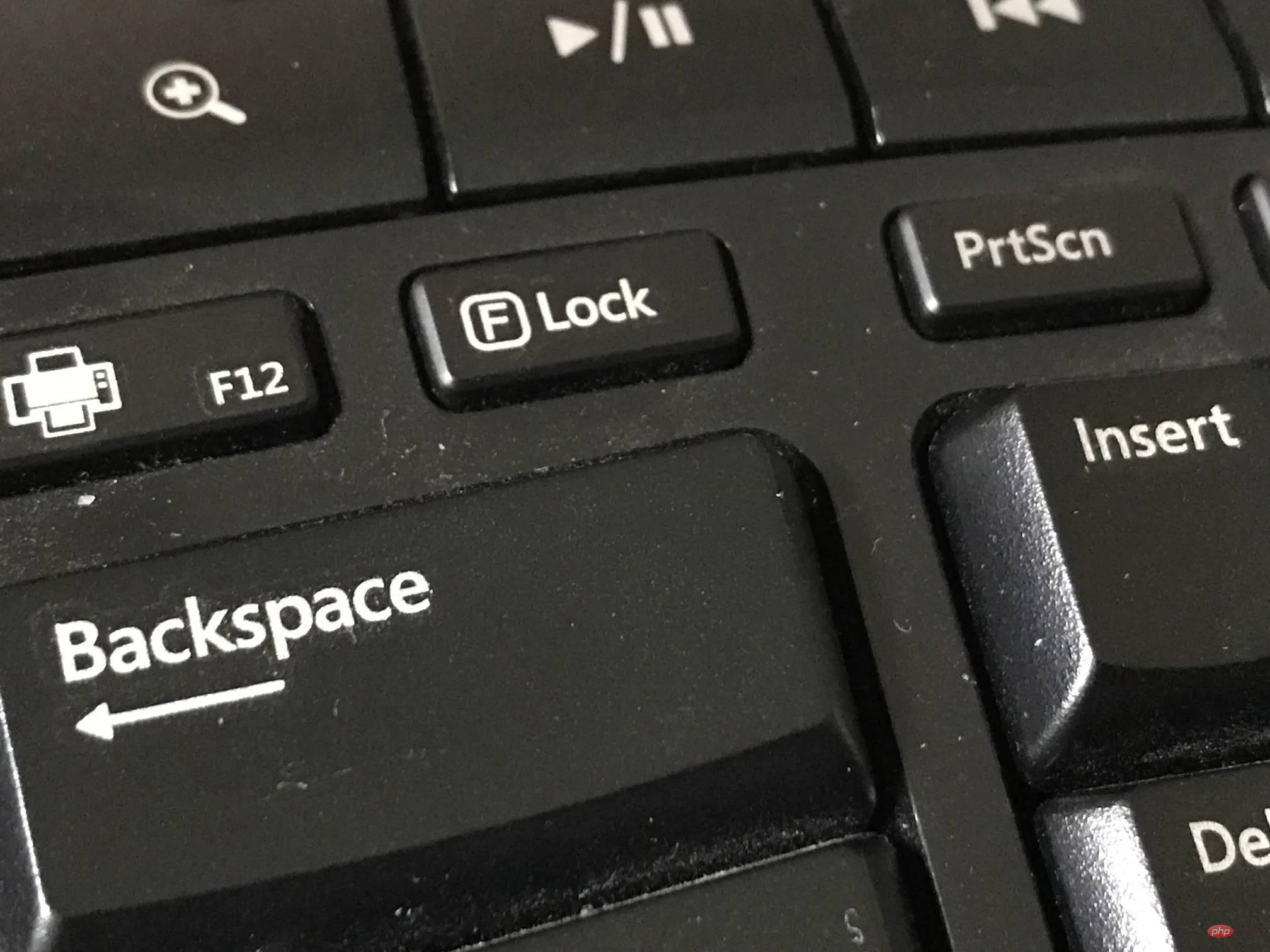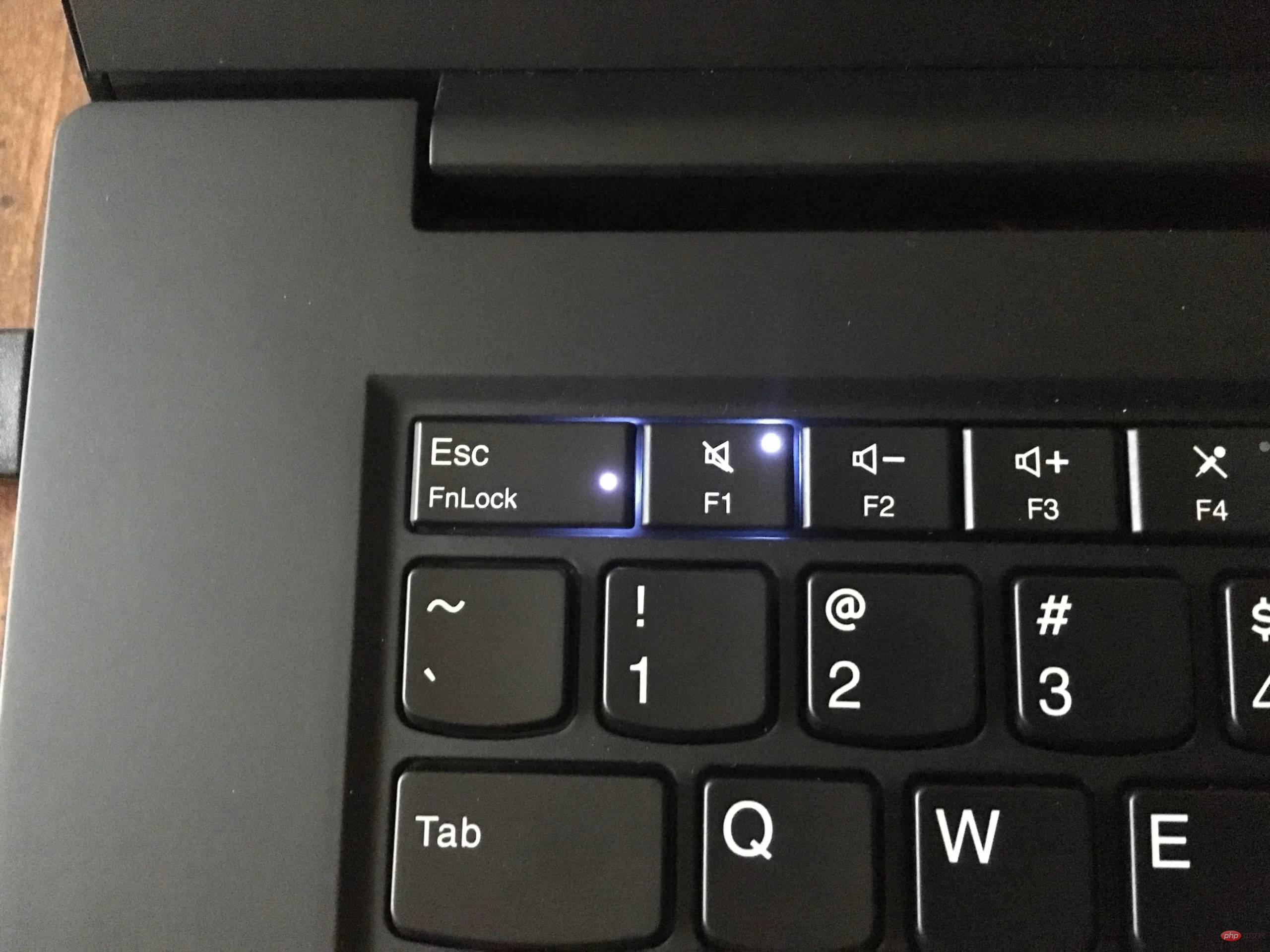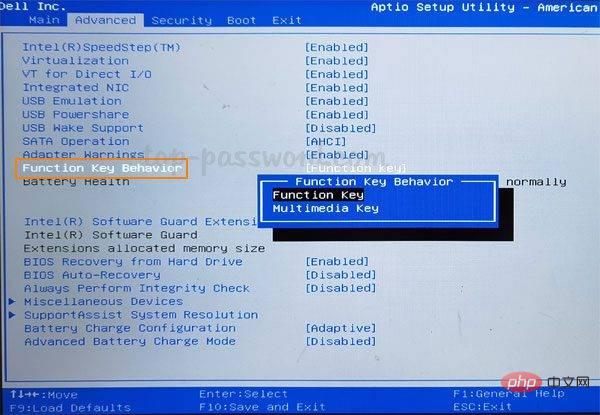Different ways to lock and unlock the Fn key in Windows 10 and 11
How the Fn key works with function keys
The Fn key on your keyboard is basically similar to the Shift and CapsLock buttons. If you create documents frequently, you know how they work: Hold down Shift to capitalize a letter or two, then release it to quickly return to lowercase, while clicking CapsLock lets you write the entire letter in uppercase sentence without holding down another key.
This is how Fn works with the standard function keys F1 through F12. By pressing one of these keys without using Fn, you can use standard commands for productivity: volume or brightness adjustment, mute, activate/deactivate Bluetooth or Wi-Fi, play media, and more. On the other hand, mixing the F1 to F12 keys with Fn gives you access to alternate commands for those keys. If you want to immediately return to the standard use of a function key, you can release the hold on the Fn button.
Also, locking the Fn key in Windows 10 or 11 permanently places the function key in its alternate command until the lock is disabled. While locked, you can also press the Fn key to quickly access the function keys' standard commands: just like what happens when the keyboard is in CapsLock, and you use Shift to type lowercase letters.
Lock and Unlock the Fn Key
Locking and Unlocking the Fn Key depends on the computer you are using, or specifically, the brand of your PC. And not all commands from F1 to F12 are the same on all computers, and not all keyboards have the same keys dedicated to locking and unlocking the Fn key. Thankfully, there are ways to do this.
Keyboard
The easiest way to lock the Fn key is to use the keyboard. However, this is where many computers vary, as not all computers have this feature.

One way to lock the Fn key using your keyboard is through the F Lock key, which lets you toggle between standard and alternate commands simply by pressing the key. Keyboards that have it usually have a light signal to indicate whether the F Lock key is activated.

If you don't have an F Lock key, you can look for "FnLock", which also sometimes comes in the form of a padlock with Fn written on it. Sometimes the FnLock or icon is printed with the Esc key, but in some manufacturers it is in the Shift or CapsLock key. Just hold down the Fn key first and then press FnLock or the padlock icon. This will activate the lock. To reverse it, just hold down the Fn key again and then press FnLock or the padlock icon.
Windows Mobility Center
To launch your Mobility Center, you can simply press Win X or right-click on the Windows icon to open the Quick Access Menu on your Windows 10 and 11. When the option appears, look for the Mobility Center and select it. This will open a window showing you some of the controls for your PC. Look for the "Row of Function Keys" section. You'll see a drop-down menu there, clicking on it will let you choose between "Function Keys" or "Multimedia Keys." Choosing the former locks the Fn key, while the latter gives you standard commands.

You can lock or unlock the Fn key this way at any time by opening Windows Mobility Center. Note, however, that not all computers have this feature. Your PC can always show you Mobility Center, but you'll notice that some portions of the function key row aren't there.
BIOS
BIOS (UEFI on some PCs) is a useful tool that allows you to configure your computer's hardware features in a variety of ways. It can do One thing that works is locking and unlocking the Fn key on Windows 10 and 11. There are many ways to enter this low-level software, the easiest is to click the Start button, click the power icon, and then hold down the Shift key while clicking Restart. Once you see the blue screen with different options, go to Troubleshooting > Advanced Options > UEFI Firmware Settings. Select Restart and your computer will restart and automatically enter the BIOS.

In the BIOS, you won't be able to use the mouse, but your keyboard's cursor keys should let you navigate the tool. Go to the main tab and look for the "Function key behavior" option and select it. In the new options that will appear, select Function Key to activate Fn Lock. After that, press F10 to save changes and select Yes to confirm the prompt.
The above is the detailed content of Different ways to lock and unlock the Fn key in Windows 10 and 11. For more information, please follow other related articles on the PHP Chinese website!

Hot AI Tools

Undresser.AI Undress
AI-powered app for creating realistic nude photos

AI Clothes Remover
Online AI tool for removing clothes from photos.

Undress AI Tool
Undress images for free

Clothoff.io
AI clothes remover

Video Face Swap
Swap faces in any video effortlessly with our completely free AI face swap tool!

Hot Article

Hot Tools

Notepad++7.3.1
Easy-to-use and free code editor

SublimeText3 Chinese version
Chinese version, very easy to use

Zend Studio 13.0.1
Powerful PHP integrated development environment

Dreamweaver CS6
Visual web development tools

SublimeText3 Mac version
God-level code editing software (SublimeText3)

Hot Topics
 What is the reason why PS keeps showing loading?
Apr 06, 2025 pm 06:39 PM
What is the reason why PS keeps showing loading?
Apr 06, 2025 pm 06:39 PM
PS "Loading" problems are caused by resource access or processing problems: hard disk reading speed is slow or bad: Use CrystalDiskInfo to check the hard disk health and replace the problematic hard disk. Insufficient memory: Upgrade memory to meet PS's needs for high-resolution images and complex layer processing. Graphics card drivers are outdated or corrupted: Update the drivers to optimize communication between the PS and the graphics card. File paths are too long or file names have special characters: use short paths and avoid special characters. PS's own problem: Reinstall or repair the PS installer.
 How to speed up the loading speed of PS?
Apr 06, 2025 pm 06:27 PM
How to speed up the loading speed of PS?
Apr 06, 2025 pm 06:27 PM
Solving the problem of slow Photoshop startup requires a multi-pronged approach, including: upgrading hardware (memory, solid-state drive, CPU); uninstalling outdated or incompatible plug-ins; cleaning up system garbage and excessive background programs regularly; closing irrelevant programs with caution; avoiding opening a large number of files during startup.
 How to solve the problem of loading when PS is always showing that it is loading?
Apr 06, 2025 pm 06:30 PM
How to solve the problem of loading when PS is always showing that it is loading?
Apr 06, 2025 pm 06:30 PM
PS card is "Loading"? Solutions include: checking the computer configuration (memory, hard disk, processor), cleaning hard disk fragmentation, updating the graphics card driver, adjusting PS settings, reinstalling PS, and developing good programming habits.
 Is slow PS loading related to computer configuration?
Apr 06, 2025 pm 06:24 PM
Is slow PS loading related to computer configuration?
Apr 06, 2025 pm 06:24 PM
The reason for slow PS loading is the combined impact of hardware (CPU, memory, hard disk, graphics card) and software (system, background program). Solutions include: upgrading hardware (especially replacing solid-state drives), optimizing software (cleaning up system garbage, updating drivers, checking PS settings), and processing PS files. Regular computer maintenance can also help improve PS running speed.
 How to solve the problem of loading when the PS opens the file?
Apr 06, 2025 pm 06:33 PM
How to solve the problem of loading when the PS opens the file?
Apr 06, 2025 pm 06:33 PM
"Loading" stuttering occurs when opening a file on PS. The reasons may include: too large or corrupted file, insufficient memory, slow hard disk speed, graphics card driver problems, PS version or plug-in conflicts. The solutions are: check file size and integrity, increase memory, upgrade hard disk, update graphics card driver, uninstall or disable suspicious plug-ins, and reinstall PS. This problem can be effectively solved by gradually checking and making good use of PS performance settings and developing good file management habits.
 Is PS slow loading related to other programs that are running?
Apr 06, 2025 pm 06:03 PM
Is PS slow loading related to other programs that are running?
Apr 06, 2025 pm 06:03 PM
The secrets to mastering Office software include: understanding different versions and platforms, correctly installing and configuring, proficient in using the software interface, in-depth understanding of feature operations, application collaboration and sharing functions, utilizing templates and styles, mastering advanced skills, and solving common problems. In addition, you need to choose a version that suits your needs, make good use of templates and styles, develop backup habits, and learn shortcut keys and advanced techniques to improve efficiency.
 Does mysql need the internet
Apr 08, 2025 pm 02:18 PM
Does mysql need the internet
Apr 08, 2025 pm 02:18 PM
MySQL can run without network connections for basic data storage and management. However, network connection is required for interaction with other systems, remote access, or using advanced features such as replication and clustering. Additionally, security measures (such as firewalls), performance optimization (choose the right network connection), and data backup are critical to connecting to the Internet.
 How to solve the problem of loading when PS is started?
Apr 06, 2025 pm 06:36 PM
How to solve the problem of loading when PS is started?
Apr 06, 2025 pm 06:36 PM
A PS stuck on "Loading" when booting can be caused by various reasons: Disable corrupt or conflicting plugins. Delete or rename a corrupted configuration file. Close unnecessary programs or upgrade memory to avoid insufficient memory. Upgrade to a solid-state drive to speed up hard drive reading. Reinstalling PS to repair corrupt system files or installation package issues. View error information during the startup process of error log analysis.





